Tech Is the Solution to a Planet in Peril, but We Must Act Now


As COVID-19 swept across the globe, a small silver lining emerged: the realization that our planet could begin to heal. With people sheltering at home, changes to Earth’s atmosphere became so significant they were visible from space. City skylines - from New Delhi to Los Angeles to Seoul - cleared for the first time in recent history.
Nature is showing us the direct impact our daily actions have on the earth. More importantly, our clearer skies indicate that we have the power to slow, stop or even reverse the trajectory of climate change if we urgently and collectively reshape how we live and work. Technology is central to this transformation, and it, too, must be managed with an urgent and collective commitment to mitigate its impacts. As the chief commercial officer of HP Inc., I am very aware of the role our company plays in leading this transformation, the responsibilities it requires and the opportunities it creates.
Alone or in isolation, decades-long commitments are insufficient - especially by the tech industry, whose devices and data centers play a significant role in the use of electricity and consumption of fossil fuels. Aspiration is important, but we must also recognize the imminent need to set short-term, achievable goals in a sea of future-looking sameness.
We can’t wait for 2030 or 2040 - the planet needs saving now. COVID-19 has revealed an unmissable opportunity for the tech industry to be part of the solution. There are several ways the tech industry can have an immediate impact, including reducing or eliminating single-use plastics, building sustainable and transparent supply chains, and using innovative resources to build long-term solutions. Here’s how:
Making recycling truly circular
For decades, the onus was on individuals to make recycling mainstream. Campaigns like “Keep America Beautiful,” which began in the 1960s, encouraged people to confront their own disposal habits. But in focusing on consumer action, we began to overlook the private sector’s role in waste production. In the past decade, however, the business community and consumers alike have begun to question how organizations are addressing waste. It’s imperative, because right now, there are more than 150 million metric tons of plastic in our oceans, with eight million more tons entering it annually - that’s equivalent to dumping a garbage truck full of plastic into the ocean every minute of every day for an entire year.
Consumers already grasp what it means to place a plastic bottle in a bin or replace plastic shopping bags with reusable totes. These actions are critical for minimizing waste and ocean-bound plastics and must be matched by business investment in circular economies. This is the concept that replaces the traditional “take, make, dispose” process with a “make, use, reuse” model—such as using recycled plastics in the production of our everyday devices and establishing systems to recycle those devices at the end of their life.
HP, for instance, has sourced more than 60 million ocean-bound plastic bottles for use in our products and has committed to eliminate 75 percent of single-use plastic packaging in the near term - by 2025. A true circular economy is not just one that feeds plastics back into the loop but reduces the total amount of materials used to limit additional waste. And once that practice is put in place, its long-term results prove easy to maintain.
This is the next step that the technology industry needs to take: commit to a substantial reduction of materials, aggressively reduce carbon emissions, and create a circular means of production.
Building a transparent and sustainable supply chain
Another residual effect of COVID-19: it has spurred a fundamental reconsideration of global supply chains. As businesses restructure for resiliency, now is the perfect moment to address other issues such as supply chain transparency, human rights and fair trade.
Organizations cannot be blind to the practices of their supply chains, and human rights are fundamental to building a safe supply chain. If global suppliers violate fundamental human rights, safe working environments, and promote wasteful and dangerous sourcing practices, partners must walk away and restructure their pipeline. The technology sector contributes trillions of dollars to global economies and therefore needs to lead the compliance of health, safety and environmental impact; with that purchasing power, we must be careful not to perpetuate – knowingly or not – the very issues of ethics we seek to overcome.
To do so, technology leaders should determine the guiding principles that will govern their strategy, like the UN Universal Declaration of Human Rights (UDHR) and OECD Guidelines for Multinational Enterprises, and ensure that suppliers and partners are held to these same standards. It is no small feat, but the only way progress will be made is by looking inside our own organizations and honestly assessing how we can action these strategies in everyday practice.
COVID-19 has provided an urgent call to action for the tech industry
Our industry must be better at leveraging our own solutions to connect with communities and build an inclusive digital world in which everyone can participate.
For instance, rapid advancements in internet, mobile, artificial intelligence (AI), data management and 5G - when applied strategically in emerging economies - have the ability to lift people out of poverty and nudge countries closer to achieving their Sustainable Development Goals (SDGs). According to the World Bank, increasing internet penetration to 75 percent in a developing country creates the potential to boost the country’s GDP by $2 trillion. PwC found that implementing AI across agriculture, energy, transportation and water could boost global GDP four percent by 2030, while simultaneously reducing greenhouse gases by four percent. UNESCO also cites lack of access to education as the one of the biggest obstacles to social mobility, leaving an opportunity for tech companies to bridge the education gap with sustainable hardware and software solutions.
In these ways, if our industry doesn’t act in the next two to three years to curb waste, reduce greenhouse emissions, make our consumption models more circular and deploy our own solutions within the communities that need them most, we’ll largely be in the same spot come decade’s-end. And that can’t happen. During this pandemic, we’ve already witnessed the power of technology — its ability to provide access to education, give parents with at-home schooling support and bridge the resource gap for underserved communities. Amid the global challenges we currently face, we must lean into this momentum and continue seeking out opportunity.
The COVID-19 pandemic has shone a spotlight on how our actions impact our planet, its people and our communities. As we slowly emerge from this crisis, let us all consider what actions we can take as consumers and companies to have a positive, lasting impact on our planet.
Image credit: Jürgen Jester/Pixabay
Renewables Proven to Be a Smarter, More Efficient Investment Worldwide


Recent analysis of the renewables landscape by BloombergNEF has determined that solar and wind power are on the verge of a tipping point: In five years, it will be more expensive to operate existing coal or natural gas plants than to build new solar or wind farms. This comes on the heels of earlier data from the International Renewable Energy Agency (IRENA), which found that, in many cases, solar and wind are already the cheapest option.
In fact, IRENA concluded that investment dollars go further now than they did a decade ago: More than twice the renewable power generation capacity was commissioned in 2019 than in 2010, but it only required 18 percent more investment.
It’s no surprise: Renewables are now cheaper to deploy
The economics of renewables have been headed toward parity for several years, but this new data now shows renewable energy’s efficiency surpassing existing fossil fuels. Coal has always been an inefficient fuel source (about 65 percent of its energy is lost in the process of burning it to generate electricity), but it was cheap. That is no longer the case, and solar and wind power have become the better investment bet, with benefits beyond economics.
Some economists note that renewables will reach a saturation point in the future. With current technologies, renewable energy may only be able to generate 70 to 80 percent of electricity across the globe, depending on regional conditions. However, the technology continues to advance. For example, electric vehicles use three times less energy compared to combustion engine vehicles (and are even cleaner when the electric source for charging is solar or wind), and battery storage technology continues to improve. Further, energy efficiency — advances in more efficient technologies in everything from data centers to washing machines — reduces demand. Improving end-use efficiency means we need less energy to generate the same amount of electricity.
In addition to being cost-effective because of its return on investment through reduced energy demand, energy efficiency is also the cleanest energy resource. You can’t emit what you don’t use.
Energy efficiency, solar and wind power all have water benefits as well, as they use little to no water. In contrast, fossils fuels use copious amounts of water to generate electricity — coal being the thirstiest of all. This is a serious consideration for countries around the world, including the U.S., that are facing increased drought and heat waves due to climate change. Reducing the use of thirsty, expensive coal in favor of water-efficient, cheaper renewables makes simple economic sense.
Opportunities to invest in renewables keep increasing
As discussions continue around how to recover from the economic stress of the COVID-19 crisis, renewable energy offers an attractive investment opportunity. Investing in long-term, sustainable solutions can both help economies recover and tackle climate change and also address resilience issues by driving a faster than business-as-usual transition to a cleaner energy mix. Many clean energy jobs cannot be outsourced and help to fuel local economies: IRENA estimates that an accelerated energy transition could mean 42 million clean energy jobs worldwide by 2050.
Some industries may experience a tighter transition in the short term; such sectors include shipping, which transports fossil fuels, machinery and pipelines around the world, as well as utilities.
Nevertheless, strategic planning and investments can help those companies move to a more sustainable and resilient business model that takes advantage of the economic shift in the energy market. Further, the lower cost of renewable energy makes it an optimal time for companies to take serious action on diversifying their supply chains, transforming their business models and ramping up sustainability goals.
Finally, with targeted investing, companies and governments can ensure communities typically left out of economic growth — in particular, communities of color and low-income communities — can be included in the solution to a more resilient, cleaner economy on the other side of this pandemic.
Image credit: Martijn Baudoin/Unsplash
U.S. Air Force Envisions a Carbon-Negative DoD Taking on New Energy Challenges


Despite the Donald Trump administration’s failure to formulate an effective action plan on climate change, the Department of Defense is continuing its efforts to shed fossil fuels. In the latest development, the U.S. Air Force has launched a new Reimagining Energy Challenge, aimed at “supercharging the innovation ecosystem” with the ultimate aim of a carbon negative target. Yes, that’s carbon negative — for the entire Department of Defense.
DoD, energy and the U.S. Air Force
The U.S. Department of Defense began including climate change in its official threat assessments during the Barack Obama administration. DoD recognizes that a warming world creates new global stress points that increase the demand for both humanitarian and military intervention, while affecting DoD facilities, supply chains and the military’s readiness.
As one of the world’s single largest consumers of fossil fuels, DoD can also leverage its buying power to determine its own energy future and that of the planet.
Within DoD a particular area of focus is on the Air Force, because that branch of the armed forces is the single largest user of fuel in the U.S.
The Air Force was an early adopter of biofuels and large-scale solar power during the Obama administration, and it continues to support foundational clean energy research. Along with other DoD clean tech initiatives, these efforts continue through to the present day, though perhaps flying under the media radar.
Reimagining energy in an uncertain world
With roots in the earliest days of fuel-powered flight, the Air Force also has innovation built into its DNA. That’s where something called AFWERX comes in.
AFWERX is the Air Force’s official innovation catalyst, aimed at connecting the Air Force with the civilian network of innovators, supply chain stakeholders and financial resources.
“We're the U.S. Air Force's community of innovators who connect Airmen with the resources required to transform their ideas into reality,” AFWERX explains in its Facebook pitch. “The mission of AFWERX is to serve the needs of the Air Force by addressing tough challenges.”
One of those challenges being climate change, it’s no surprise that the Air Force has set its sights high. The Reimagining Energy Challenge is a crowd-sourcing platform that stimulates innovators to aim at two broad targets: eliminating all fossil fuel dependency across the entire DoD, and the creation of a carbon negative DoD.
The new challenge enlists innovators in a mission to "help the DoD with aspirations of eliminating all #fossilfuel dependency and becoming #carbonnegative," AFWERX emphasizes.
The Air Force is evaluating energy from every angle
The Reimagining Energy Challenge also reflects the urgent need to address energy issues that exist regardless of whether or not the world warms up catastrophically.
AFWERX notes that the Air Force’s rising demand for fuel, the emergence of new threats, and the scarcity of fossil fuel in the future all combine to demand a more diverse and resilient approach to energy.
With that in mind, the Reimagining Energy Challenge seeks solutions that solve energy issues from a holistic perspective, including: energy availability when and where needed for mission effectiveness and quality of life; more effective warfighting and humanitarian missions that are less reliant on fossil fuels; the increased ability to rapidly respond to humanitarian crises; leveraging all energy sources for military use such as wind, water, nuclear, hydrogen and thermal; the creation of new industries and capabilities inspired by the U.S. DoD; and harnessing energy from space.
This challenge covers all the bases, including fixed and mobile energy generation and storage, transmission and distribution, warfighting and operational equipment, data collection and deployment, and something called “energy culture, policy and education.”
Energy culture, policy and education
That cultural and educational aspect could become especially important after Inauguration Day in January 2021, when a potentially new administration in the White House could reinvigorate public sentiment in favor of climate action.
In addition to the Air Force, other branches of the U.S. Armed Services have been working to instill a culture of clean power, energy efficiency and energy conservation. As members of the military and civilian workers cycle back into their communities, they become crucial ambassadors of the sustainability message.
By promoting the early adoption of clean power, DoD has helped stimulate the market for new technology. Now it’s up to business leaders to support innovation and advocate for a more resilient and sustainable DoD.
Innovators who want to get in on the action still have time to participate in the Reimagining Energy Challenge. The original deadline of October 21 has been extended to October 29.
Image credit: Aral Tasher/Unsplash
GM Reveals Hummer EV and Its Monster Performance
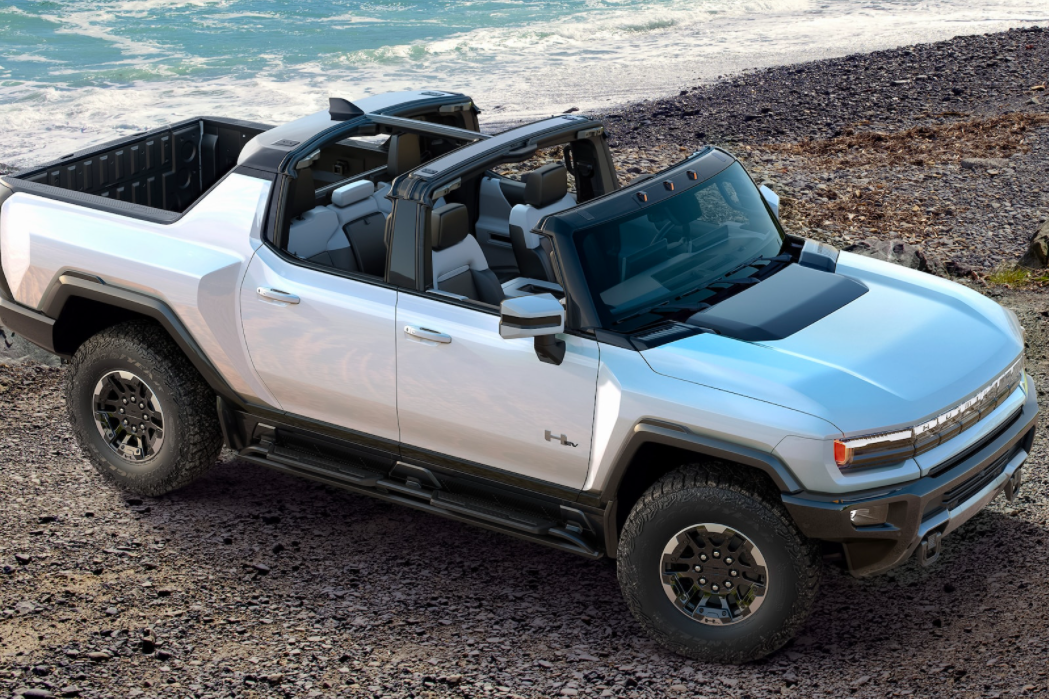
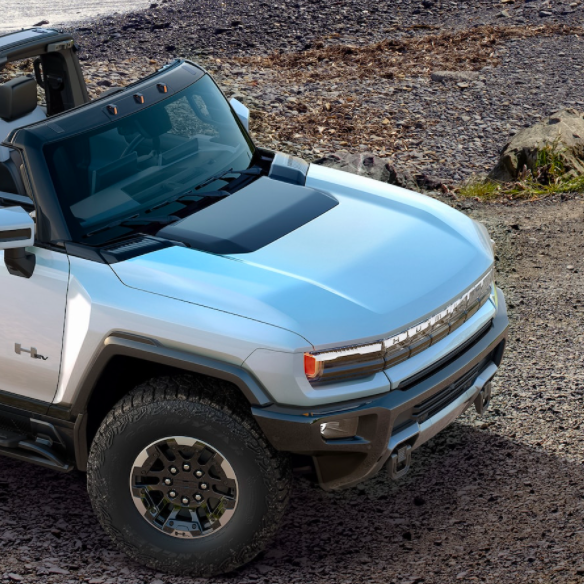
The Hummer is back. The brash, military-inspired outsized SU — which was a symbol of excess in the first decade of the 2000s only to disappear along with much of the U.S. economy in early 2009 — will hit the road again, reborn as the Hummer EV, in late 2021.
Whether or not you think the world needs to see the return of such a vehicle is a matter of opinion, but it’s not the Hummer of old, and it will return with a more environmentally friendly touch.
The Hummer EV is a sign of things to come at GM
The Hummer this time around is all-electric and is the second electric vehicle from General Motors (GM) to be revealed this year, following the Cadillac Lyriq, with the company’s next-generation EV platform. It also represents another step toward GM’s promised all-electric future, which will span across all of the company’s brands and market segments over the next five years.
Resurrecting the Hummer under the GMC marque, General Motors has retained all the looks and the heft of the original but has ditched the gas-guzzling internal combustion engine in favor of a three-motor electric powertrain for the “Edition 1” version of the new Hummer.
Revealed online via a brief video stream on Oct. 20, the Hummer promises to be an extremely capable off-road vehicle, packing a performance punch that stacks up well against future rivals such as Tesla’s Cybertruck. Unlike Tesla, however, GMC is eschewing a futuristic look and, instead, its form harkens back to the more familiar.
Though unmistakably a Hummer, under the skin it’s all new. As with the Cadillac Lyric, the Hummer EV will use the next generation Ultium modular-battery technology GM has developed in partnership with South Korea’s LG Chem. The reveal did not detail the size of the battery in the new Hummer, but it has to be pretty massive to meet the performance numbers GM is promising.
The Edition 1 will boast a drivetrain putting out 1,000 horsepower and 11,500 pound-feet of torque, which will be capable of launching the vehicle from zero to 60 miles per hour in approximately three seconds. In addition, GMC expects the Hummer EV to travel 350-plus miles on a single charge. 800V DC fast charging will allow drivers to add a claimed 100 miles of driving range in as few as 10 minutes, making this a serious vehicle for covering useful distances.
Who will lead in the all-electric truck race?
The performance is impressive, and the range is certainly very respectable. But considering the company is claiming the Hummer EV to be “The World’s First All Electric Super Truck,” one has to stack up the specs against the Tesla, which pulled the covers off the Cybertruck a while back and also promises a fall 2021 delivery for its tri-motor variant. On paper, the Cybertruck bests the Hummer with a claimed 2.9 seconds to 60 miles per hour and a significantly higher 500 miles of range.
So, can the Hummer EV truly carry the mantle as the world's first all-electric super truck?
Well, those claims are always subjective, but GM has detailed a few other attributes which certainly go beyond just power, range and drag strip times. Indeed, we get more of an idea of other areas where GM might compete favorably.
For example, the Hummer will come with the option of four-wheel steering and, along with that, a neat trick GM is calling the “crab walk” — literally, this allows the vehicle to move diagonally. Not something, perhaps, that anyone needs to do on a daily basis, but it's a feature which allows the vehicle to navigate around rocks on a narrow off-road trail and, who knows, maybe gets you out of a tight spot at the shopping mall parking lot.
Air ride suspension permits the driver to jack up the truck an additional six inches so the armor-plated underside is further protected from bottoming out on rocky terrain. Conversely, drivers can lower the vehicle by two inches for better aerodynamics on the freeway. Piloting the vehicle on tricky ground is aided by 18 cameras located all over the vehicle, including two beneath it, providing real-time visuals and presumably eliminating any possible blind spots that a driver is ever likely to encounter.
The Hummer EV is to be outfitted with removable glass roof panels — called the infinity roof — converting the cabin to an open-top experience, and drivers will benefit from GM’s Supercruise driver assist package featuring auto lane-changing capability. The cargo space is a traditional pick-up truck style.
One challenge for this EV: Cost
If you want one, you can go onto GMC’s website now and reserve your very own, but you’re going to need a robust bank balance.
The Edition 1, available in fall 2021, starts at a shade over $112,500. We can assume GM is looking at this as somewhat of a halo car to showcase the automaker’s EV technology, as opposed to something it plans to sell in large volumes.
To spend under 100,000 — though only by five bucks — you’ll have to wait another year for a lower specification model, the EV3X version, which still comes with an impressive 800 horsepower tri-motor powertrain. A third option comes a year after that. The fourth and cheapest variant, the EV2, available in the fall of 2024, is a dual motor offering yet sacrifices some range to around 250 miles between charging, for just under $80,000.
The Hummer EV2, with a range of 250 miles, is comparable with the Cybertruck’s base model, but since the lowest-priced Cybertruck is priced from $39,900, the Tesla comes in a lot cheaper and will be available two years sooner. That has to be hard to overlook.
Still, the Hummer has some brand cache in this segment, looks like a traditional truck — doubtless important to many — and certainly GM is revealing at the outset more details of the Hummer’s off-road bona fides, an area where Tesla remains untested. But will all that be enough to guarantee its success?
Image credits: GMC
The Fight For Racial Justice is Intersectional: A Tale of Three Case Studies
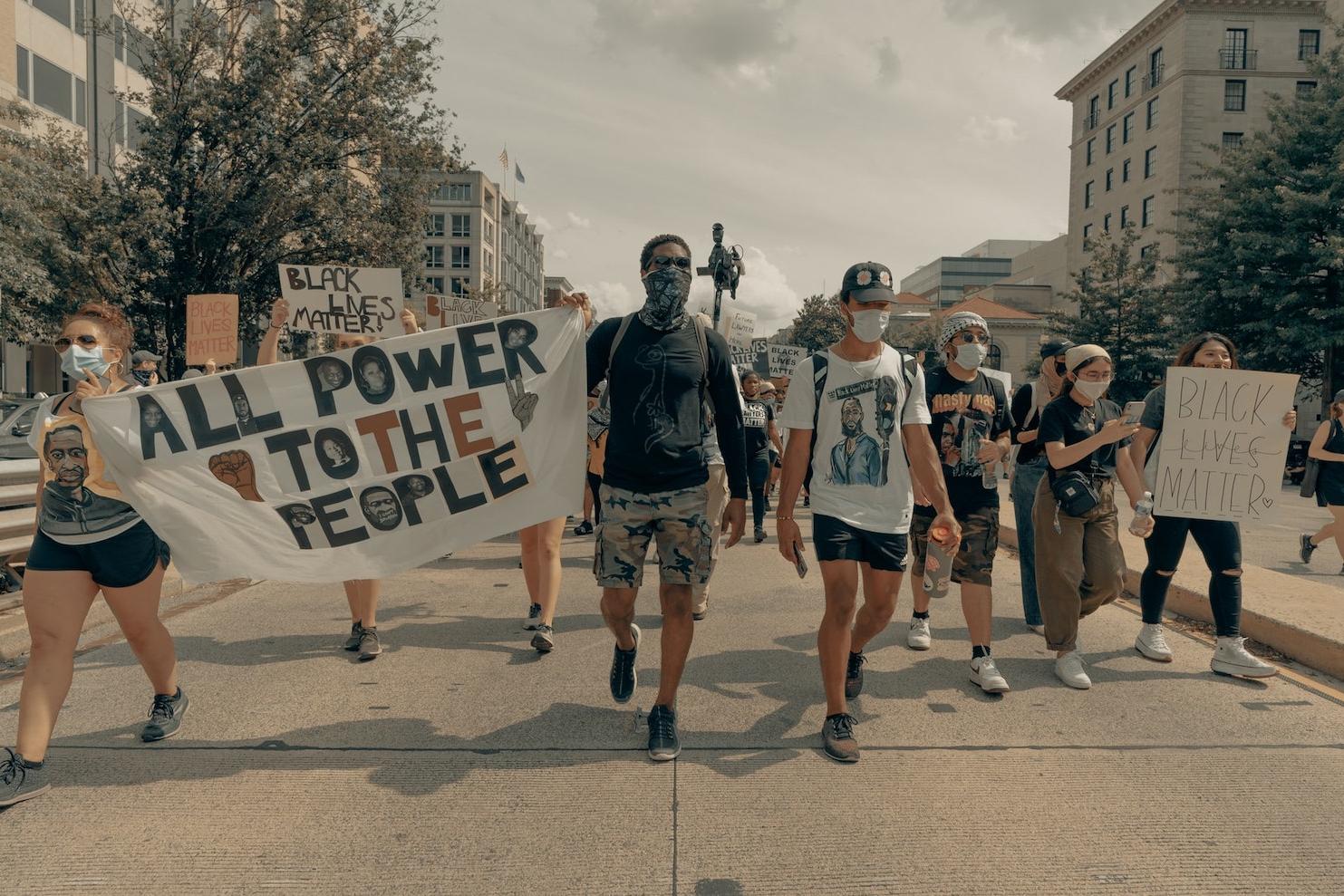
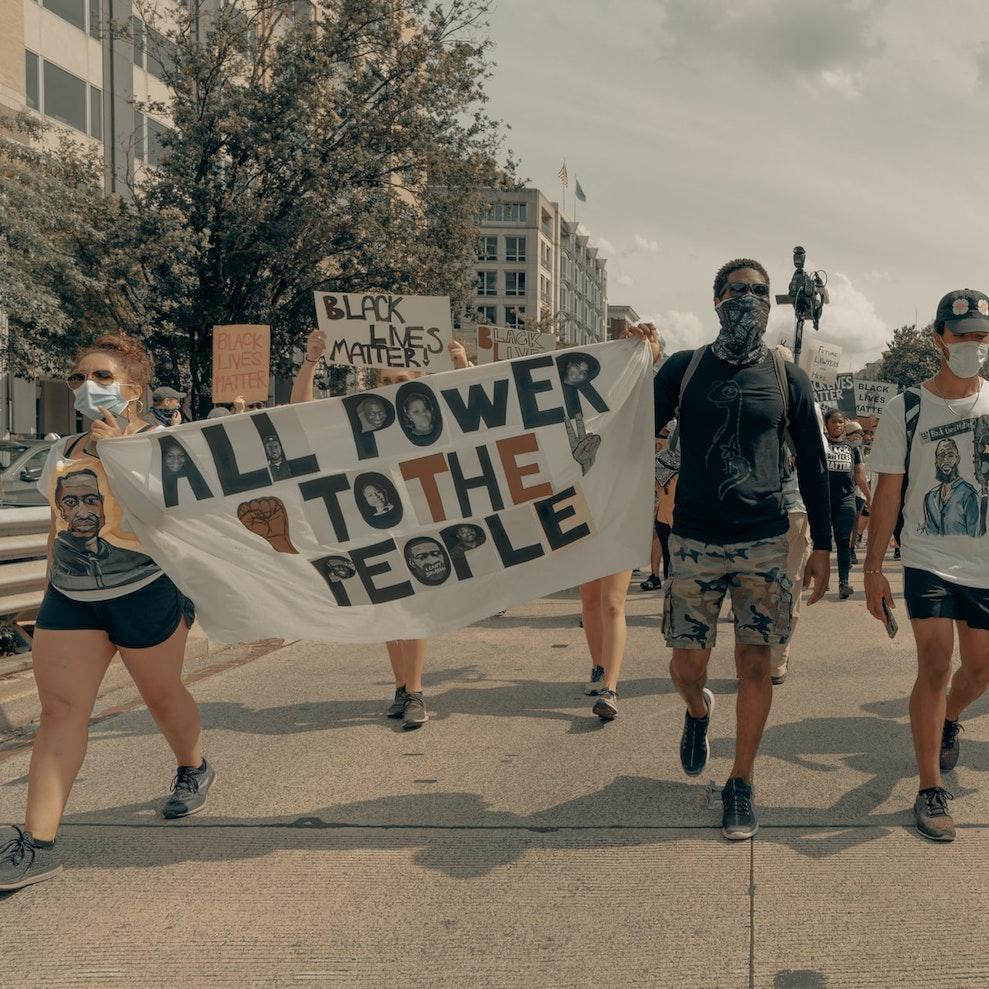
Issues of racial and economic justice have dominated the national conversation since the murders of Ahmaud Arbery, Breonna Taylor and George Floyd earlier this year. As Conroy Boxhill, managing director of Porter Novelli-Atlanta, observed during the 3BL Virtual Forum last week: “The fight for racial justice is not siloed.” It is not separate from inequalities related to healthcare, energy, housing, community development or public policy. True progress is intersectional and takes on the overlapping issues that prevent equal access to opportunity, justice and wellbeing.
On the Forum’s virtual stage, Boxhill spoke with representatives of three very different organizations — energy policy nonprofit Fresh Energy, cult favorite ice cream brand Ben & Jerry’s and Latino advocacy organization UnidosUS. They discussed what brand leadership on racial justice looks like and how businesses can work across sectors to advance equity. Each organization’s unique case studies offer a glimpse into what the intersectional fight for racial justice means.
Fresh Energy: Ensuring no one is left behind in the fight against climate change
In five the years since the Paris climate agreement was adopted by U.N. member states, a growing number of governments and corporations have pledged to reduce their greenhouse gas emissions through a shift to clean energy. This is all great news, but if inclusion isn't kept in mind, there's a danger that the move toward a low-carbon economy could further entrench the racial and economic injustices that already pervade our societies, said Ben Passer, director of energy access and equity for Fresh Energy.
"Corporations are taking up the mantle of fighting the climate crisis," Passer said on the Forum's virtual stage. "What’s tricky is that while we’re excited to see that .... we also want to make sure those communities that don’t have the resources to invest in the next wave of clean energy are still able to access it." Based in St. Paul, Minnesota, Fresh Energy works with legislators, utilities and other stakeholders to advance clean energy policy in the state — and it's increasingly focused on energy access and equity, an effort further galvanized following the murder of George Floyd in St. Paul's sister city, Minneapolis.
In and of itself, clean energy policy has vast potential to positively impact communities of color: In Minnesota, 91 percent of Black, Indigenous and people of color (BIPOC) live in areas with high air pollution, impacting their health and putting them at greater risk of serious complications if they contract COVID-19. This is an issue nationwide, with people of color living with 66 percent more air pollution than their white counterparts on average.
While cleaner air benefits everyone — particularly those who are already disproportionately affected — many existing clean energy policies otherwise exclude people of color and low-income people. Renters, for example, have fewer options to control how their homes get energy and often can't benefit from cash incentives for things like solar power or energy efficiency. Through policy advocacy, Fresh Energy is looking to expand clean energy benefits to more people through means such as community solar gardens that open up solar energy to low-income renters and grant funding to improve energy efficiency in multifamily buildings. In the wake of the coronavirus pandemic, it also advocated for the use of Community Development Block Grant funds from the federal relief bill to support housing assistance programs.
"Being here in the Twin Cities and in Minnesota, I have to be candid, I feel a tremendous amount of accountability to make sure that our communities are benefiting [from our work]," Passer said. "The murder of George Floyd rocked our community to its core, and if you drive through Minneapolis, still to this day, communities are rebuilding .... As they rebuild, we want to make sure they’re doing it in a way that is really helping the community.”
Ben & Jerry’s: Bold activism breeds community engagement
A week after the murder of George Floyd, Ben & Jerry's issued one of the strongest corporate statements ever seen in support of racial justice, calling on white America to "acknowledge its privilege" and "dismantle white supremacy." It laid out four policy points for government to enact, and businesses and individuals to support, including committing the U.S. to a "formal process of healing and reconciliation" and creating a national task force aimed at "ending racial violence and increasing police accountability." The company also voiced its support for slavery reparations.
"There are moments when it is important to stand up, be counted and be bold, and in the wake of the tragic murder of George Floyd, we felt it was one of those moments," said Chris Miller, head of global activism strategy for Ben & Jerry's. "While words are insufficient and not enough, words need to be said at certain times, and we felt like this was the moment.”
Along with public statements and policy advocacy, Ben & Jerry's continues to work with nonprofit partners like the Advancement Project and Color of Change, and Miller says the company is keenly focused on engaging customers in the fight for racial justice. This month it re-released its Justice ReMix’d ice cream flavor as part of a call to urge young people to vote with justice in mind in the Nov. 3 election, and it launched a podcast about the history of racism in America in September.
"We speak to a broad audience," Miller said. "We sell more ice cream at Walmart than anywhere else, so we’re not preaching to the choir. We have an opportunity to get our fans and our customers involved in the causes that we are involved in."
UnidosUS: Bringing communities together to fight for racial justice
Through policy advocacy and community partnerships, UnidosUS works on a breadth of issues affecting the U.S. Latino community, including immigration reform, education, healthcare and economic empowerment. The Washington, D.C.-based organization also came out in support of the Black Lives Matter movement in the weeks following the murder of George Floyd, declaring "tu lucha es mi lucha — your fight is my fight."
The group's president and CEO, Janet Murguía, who marched alongside Black Lives Matter demonstrators in the streets of D.C., penned a powerful op/ed for The Hill calling on Latino communities to join the fight for justice for Black Americans. The organization also voiced support for the Police Exercising Absolute Care with Everyone or “PEACE Act” to raise the standards for use of force by law enforcement and joined the National Hispanic Leadership Agenda in calls for racial justice and police reform.
But both Murguía and Orson Aguilar, principal of policy and advocacy for UnidosUS, who spoke on the Forum's virtual stage, acknowledged there is still more work to do to rally the Latino community as allies — particularly with respect to the inclusion of Afro-Latinos in broader conversations about Latinos' rights.
The nearly 1 in 4 U.S. Latinos who identify as Afro-Latino often face multiple layers of discrimination both due to the color of their skin and to the xenophobic and anti-immigrant sentiment rising across the U.S. "Looking forward, we really do have to think about how we can be more inclusive of our Afro-Latino community," Aguilar said. "We need to also acknowledge that there is discrimination and racism in our own community, be bold enough and brave enough to call it out and talk about it, because if we don’t it will continue to happen."
While we’re on the topic of the U.S. elections, we’ll spend much of the final episode of the 3BL Virtual Forum, tomorrow, Thursday, Oct. 22 at Noon ET/9 a.m. PT, on how companies are doing their part to ensure everyone who’s eligible to vote in the upcoming U.S. elections can cast their ballots. Register if you haven’t already — we are presenting this event at no cost.
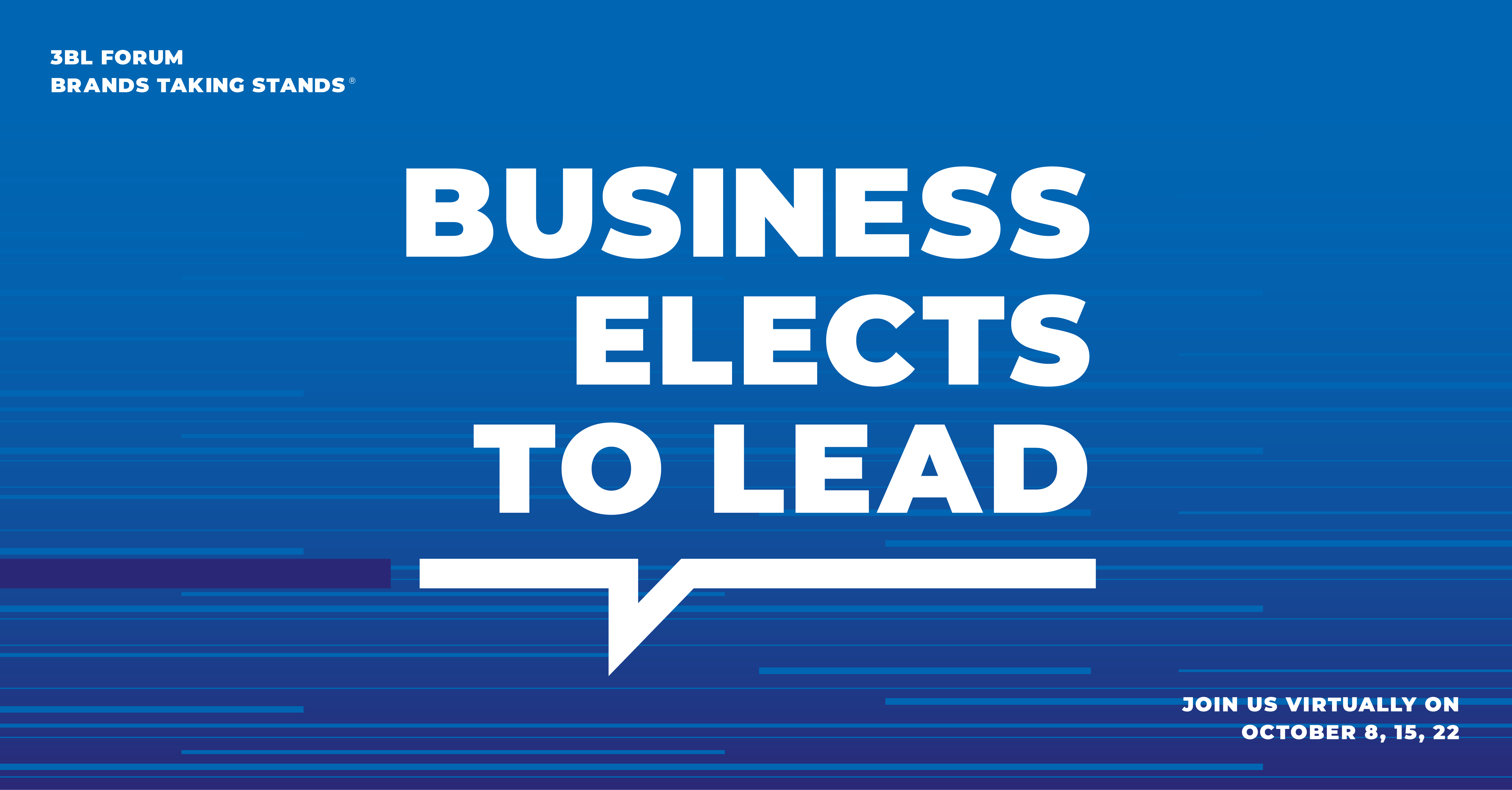
U.S. Chamber of Commerce Stands Up for Diversity Training
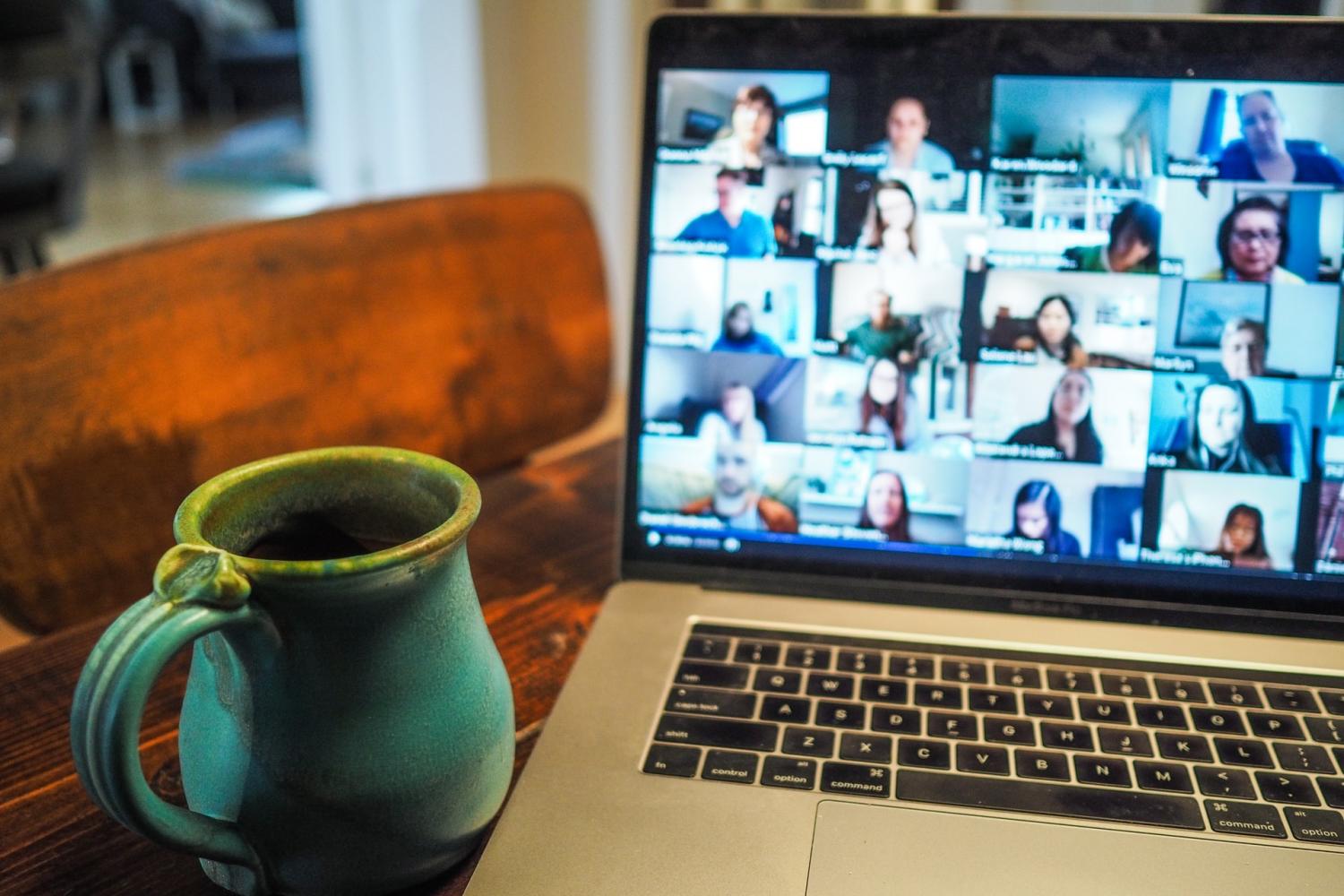
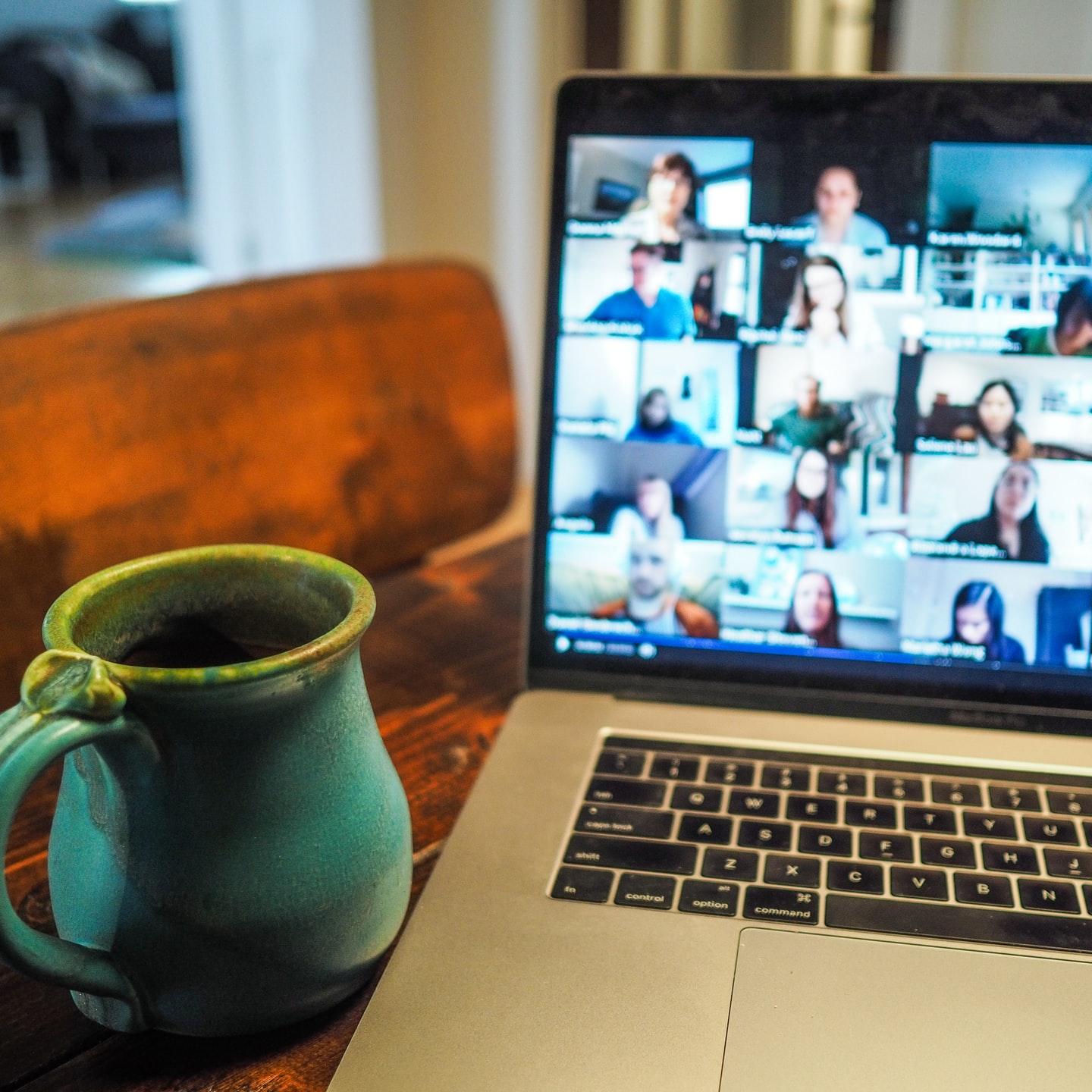
When President Trump issued a new executive order that regulates diversity training among federal contractors, he unleashed a firestorm of protest from civil rights activists and other social advocates. That executive order also provoked a rare but strong critique from the U.S. Chamber of Commerce, in the form of a public letter to the president.
The letter describes how the September executive order creates bottom line headaches for U.S. companies, but more interesting from a corporate responsibility perspective is the importance it places on diversity training in a civic landscape characterized by a diverse population and more global interaction.
The executive order on diversity training is, to start, a throwback
The order followed on the heels of a months-long, nationwide series of protests in support of the Black Lives Matter movement, which gained renewed force over the murder of an unarmed Black man, George Floyd, at the hands of uniformed police officers in Minnesota.
Responding to the massive public outpouring of support for equal justice and equal protection, many U.S. firms pledged their own support for the movement in various forms. That included improvements in diversity training, with a focus on unconscious bias and structural racism in the U.S.
[Editor's note: Be sure to sign up for the weekly Brands Taking Stands newsletter, which arrives in your inbox every Wednesday.]
Despite attempts by certain politicians and pundits to undermine the message of Black Lives Matter activists, the protests still continue and the movement has maintained popularity with large segments of the U.S. public.
Nevertheless, instead of supporting the efforts of the business community to respond to public sentiment, on September 22 the president undercut the ability of federal agencies and contractors to offer comprehensive, meaningful diversity training.
Specifically, the order aims to prevent something it calls “offensive and anti-American race and sex stereotyping,” mainly by banning the discussion of unconscious bias and structural racism in diversity training.
With its emotion-stirring references to “anti-American,” onerous stipulations, vague terminology and a built-in employee complaint hotline, the new order all but follows the career-destroying “red scare” playbook deployed by U.S. Senator Joe McCarthy in the 1950s.
The bottom-line case against the new executive order
Aside from that, the new order creates significant new regulatory burdens on U.S. businesses. However, the business community was curiously silent in the wake of the new order - until last week, that is.
The U.S. Chamber of Commerce outlined the business case against the new order in a blistering public letter dated October 15, co-signed by a group of 150 local Chambers of Commerce, other commercial organizations, and non-profit groups.
From a bottom-line perspective, the letter draws particular attention to the confusion over standards resulting from the order’s reliance on subjective, ambiguous language.
That includes confusion over what content is actually permitted and what is excluded, as well as the more complicated matter of handling variations in the perceptions of individual employees.
“Because of the ambiguity and subjective nature of the key terms that define what training materials are not allowed, whether the training material in question is compliant could very well depend on the outlook of the person filing the complaint,” the Chamber observes.
The ambiguity effect could become especially burdensome for multinational companies that have federal contracts, because the order provides no guidance on diversity training for employees outside of the U.S.
Even if guidance on that point becomes available, the Chamber notes that additional guidance is needed to address circumstances under which the order conflicts with another country’s training mandates.
Employee relations also factor into the Chamber’s analysis of the complaint hotline embedded in the new order.
“Employers are concerned that this will invite non-meritorious complaints from employees who may be disgruntled about a range of different matters,” the Chamber writes.
Because the order sets vague parameters for filing a complaint, the Chamber also notes that an employee could touch off a burdensome investigation simply by reporting a discussion between attendees at a training session, even though the conversation is not part of the official presentation.
Diversity training in the era of diversity and inclusion
In addition to these direct bottom line issues, the Chamber also calls attention to the foundational role of diversity training in the modern business environment.
“…The E.O. is already having a broadly chilling effect on legitimate and valuable D&I training companies use to foster inclusive workplaces, help with talent recruitment, and remain competitive in a country with a wide range of different cultures,” the Chamber writes, referring to reports that some U.S. companies have suspended diversity training altogether in the wake of the new order.
The race for top talent already factors strongly into the race for top dollars. Companies that fail to foster a diverse and inclusive environment will find themselves falling behind, especially those involved in fields that are also vulnerable to broader shifts in brand reputation.
Elections have consequences
The letter rounds off with a sharp poke at the president’s penchant for using executive orders to circumvent the law.
The Chamber accuses the September order of pursuing the same kind of social engineering that the Chamber found highly objectionable during the Obama administration.
“Such an approach effectively creates two sets of rules, one for those companies that do business with the government and another for those that do not,” the Chamber writes. “Federal contractors should be left to manage their workforces and workplaces with a minimum amount of interference so long as they are compliant with the law.”
That emphasis on compliance with the law is especially forceful during the 2020 election cycle, in which the diversity and inclusion stakes have been so clearly defined by the behavior of the president over the past four years.
Although the message ends with a commitment to work with the president to overcome their objections, the Chamber’s overall message is clear. On Election Day, business leaders who value diversity training have an opportunity to cast their vote in favor of legislators who support a level playing field for all companies.
Image credit: Chris Montgomery/Unsplash
The Gloves Come Off: Global Businesses Recruit U.N. for Plastic Pollution Solution
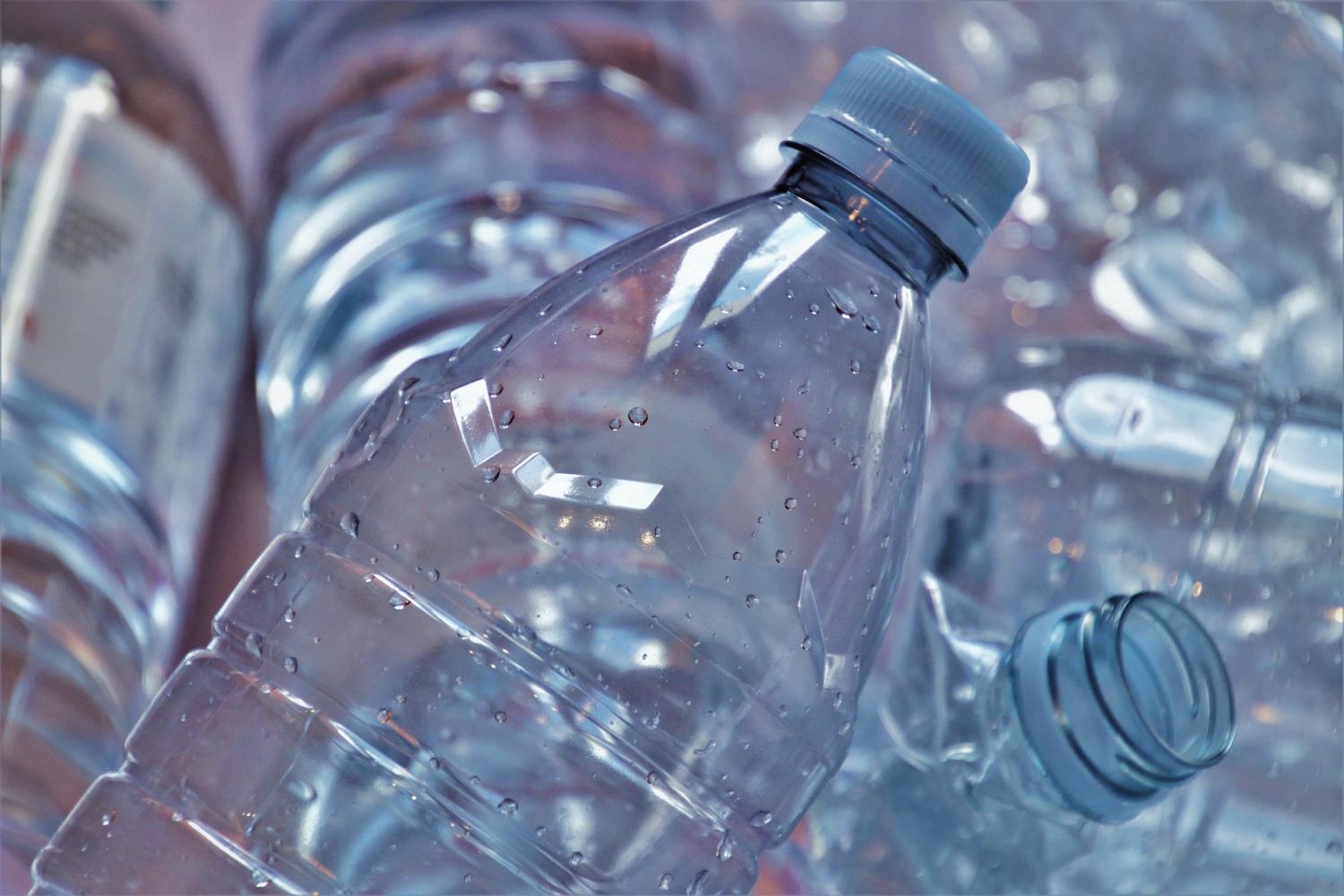

Despite rising concern over the global plastic pollution crisis, the amount of plastic entering the environment has continued apace. Public pressure has resulted in a weak patchwork of nation-based regulations and voluntary efforts, but they have failed to stem the tide. Now a group of global corporations has joined together to support a coordinated, treaty-based circular economy strategy through the United Nations. The question is, will it succeed where others have failed?
A treaty-based effort on plastic pollution
The new plastic pollution effort launched last week under a partnership between the Ellen MacArthur Foundation, WWF and the firm Boston Consulting Group, following a jointly authored report, The Business Case for a UN Treaty. “Despite a doubling of voluntary initiatives and national regulations over the last five years, plastic waste continues to leak into the environment at alarming rates – with more than 11 million [metric tons] of plastic flowing into our oceans each year,” explain the partners.
They acknowledge that voluntary support has grown in recent years, highlighted by the the New Plastics Economy Global Commitment, which just recruited the U.S. as part of its Plastics Pact network.
However, the effort to support a circular economy has been outrun by the bottom-up demand for plastic. A more intensive, top-down approach is needed.
“A binding global agreement that builds on the vision of a circular economy for plastic can ensure a unified international response to plastic pollution that matches the scale of the problem,” explained Ellen MacArthur, who is founder and chair of Trustees of the Ellen MacArthur Foundation.
The proposed treaty on plastic pollution would coordinate regulations among nations and require those nations to set targets and develop action plans.
The treaty would also establish agreed-upon methods and metrics, and recruit support for innovation and new infrastructure.
But will this plan work?
The prospects for the success of such a venture would have been dim just a few years ago. However, recent improvements in bio-based alternatives have helped to set the stage for an international treaty that promotes commercial innovation.
Coca-Cola is one early adopter, having developed and introduced its proprietary PlantBottle in 2009.
In addition, the emergence of next-generation petrochemical recycling technology is raising the possibility of reclaiming hard-to-recycle plastics including foam, polyethylene, and dirty or mixed waste.
U.S. policy makers have already spotted the potential for economic development in that field. In one recent move, the Department of Energy awarded $11.6 million to the University of Delaware to support its new Center for Plastics Innovation.
The research will help support efforts to make 100 percent recyclable products inside and outside of the single-use plastic packaging field. That trend has already emerged in the footwear area, with Adidas’ 100 percent recyclable shoe initiative being just one recent example.
Just last week, the Energy Department also committed a new round of $27 million in funding to support 12 new projects in the field of next-generation plastic recycling. The 12 projects represent a range of new technologies including new formulations and bio-based materials.
In addition, some large-scale plastic packaging users are no longer depending on their supply chains to develop recycled plastic sources. They are actively financing and supporting R&D projects that provide them with more sustainable materials and feedstocks.
One recent example is L’Oreal, which has partnered with the French bio-industry research firm Carbios on molecular-scale recycling technology for PET bottles.
The business case for high-tech recycling
Another indication of the potential for new economic activity in the high tech recycling space is indicated by a bill currently before the Pennsylvania State Senate.
The bill, which has already passed the Pennsylvania House, would take next-generation recycling facilities out of the generic “recycling” category and reclassify them as manufacturing facilities. The shift recognizes the vast technology gulf between conventional plastic waste-to-energy incineration and modern pyrolysis technology.
Unlike incineration, pyrolysis is a closed, low emission (or potentially zero emission) process that melts plastic into a reusable pellet-form feedstock. Pyrolysis can also be used to reclaim plastic for liquid fuel.
The energy needed to power the process is also getting a sustainability makeover. In one example, researchers are exploring the potential to deploy recovered pyrolysis gas and molten salt from a concentrating solar power system.
Pennsylvania’s support for next-generation plastic recycling is particularly interesting because the state is part of an ongoing Energy Department plan to establish five major new petrochemical facilities in the area, leveraging Appalachian shale gas resources.
The plan was already beginning to unravel as overbuilding in the global petrochemical industry ran into the COVID-19 crisis. If the recycling bill is signed into law — which appears likely — growth in the pyrolysis industry would further undermine the demand for virgin shale gas in the region.
Going beyond recycling
Still another recent development is the support of leading producers and buyers of plastic. Recycling, reclaiming, and reusing are all important steps to reduce plastic pollution, but a permanent solution to the problem will lean heavily on cutting off the plastic pollution problem at the source.
To that end, WWF, the MacArthur Foundation and BCG have recruited the support of more than two dozen global companies that serve as pipelines for much of the world’s plastic packaging.
These companies have already taken on the plastic pollution challenge on a variety of fronts, including reducing their use of plastic packaging and designing packages for reuse instead of disposal.
The list includes the packaging producer Amcor and the chemical company Borealis, along with familiar brands in food production such as Danone, Mars, Nestlé, PepsiCo, Coca-Cola and Unilever. The global retail industry is also represented, by H&M and the supermarket chains Tesco and Woolworths, among others.
The missing piece of the plastic pollution puzzle
Consumer support is another element that has been missing from plastic reduction movement. It is difficult to change individual habits, as evidenced by the achingly low rate of recycling participation in many parts of the U.S.
Nevertheless, consumer involvement is essential for the shift from single-use packaging to refillable and reusable packaging, and there are signs that support to tackle plastic pollution is growing.
Due to the efforts of WWF, numerous other organizations and business leaders in a wide range of fields, public awareness of the plastic pollution crisis has become part of the mainstream public conversation in recent years.
“The issue of plastic pollution is ranked among the top three environmental concerns globally,” explains The Business Case for a UN Treaty. “With growing scientific evidence of the environmental and social impacts of plastic pollution, public interest in the topic has spiked in recent years.”
The report identifies 2017 as an “inflection point.”
“Plastic is now viewed as the most negative material used for consumer goods items, with 65 percent of global consumers associating it with ocean pollution and 57 percent deeming it harmful,” the report states.
In tandem with growing public concern over the impacts of climate change, support for action on plastic pollution has nowhere to go but up.
That seals the business case. Now it’s up to consumers and business leaders to take their case to policy makers, here in the U.S. and elsewhere.
Image credit: Pixabay
Businesses Need Political Stability, but CEOs Are Too Timid in Demanding It
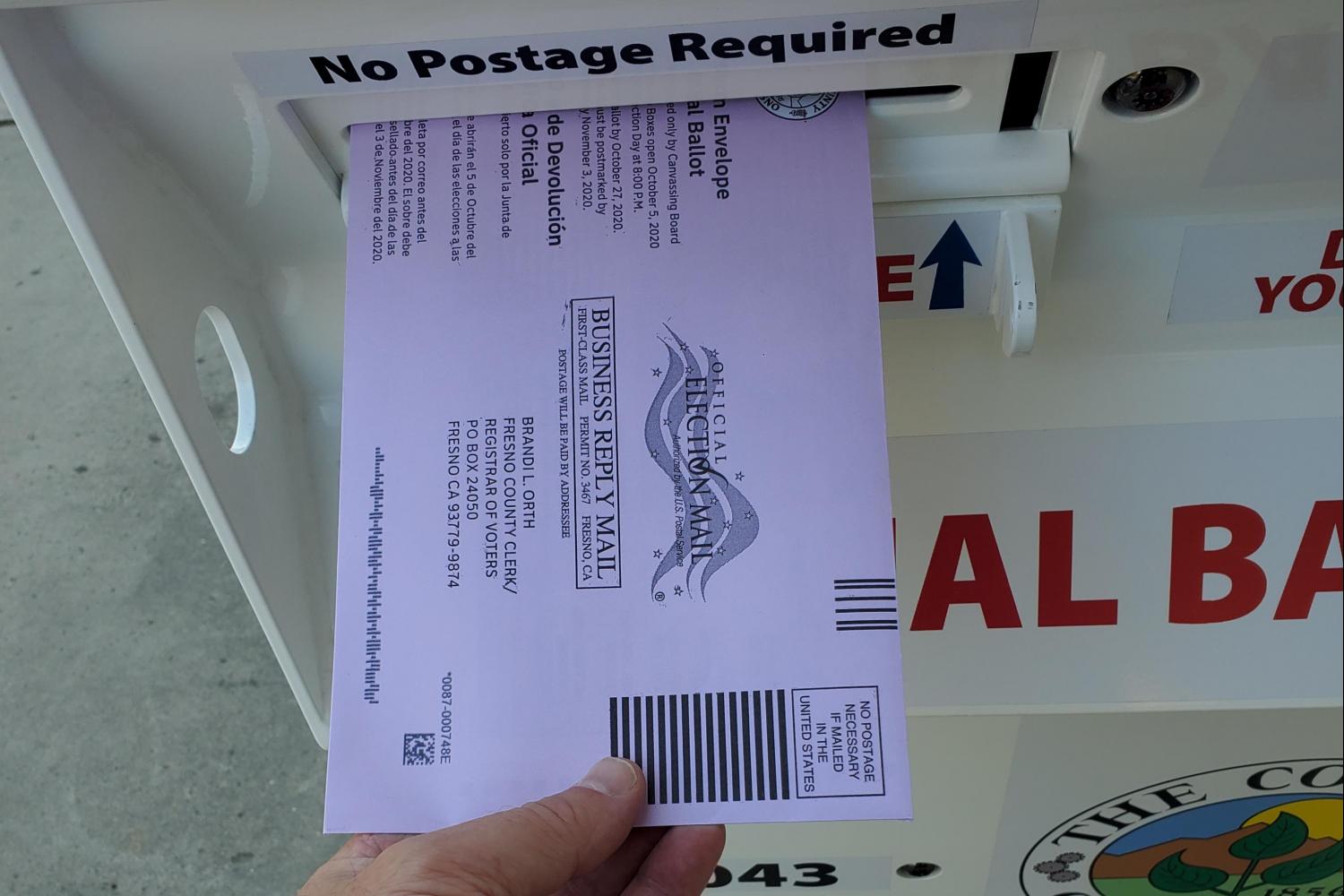
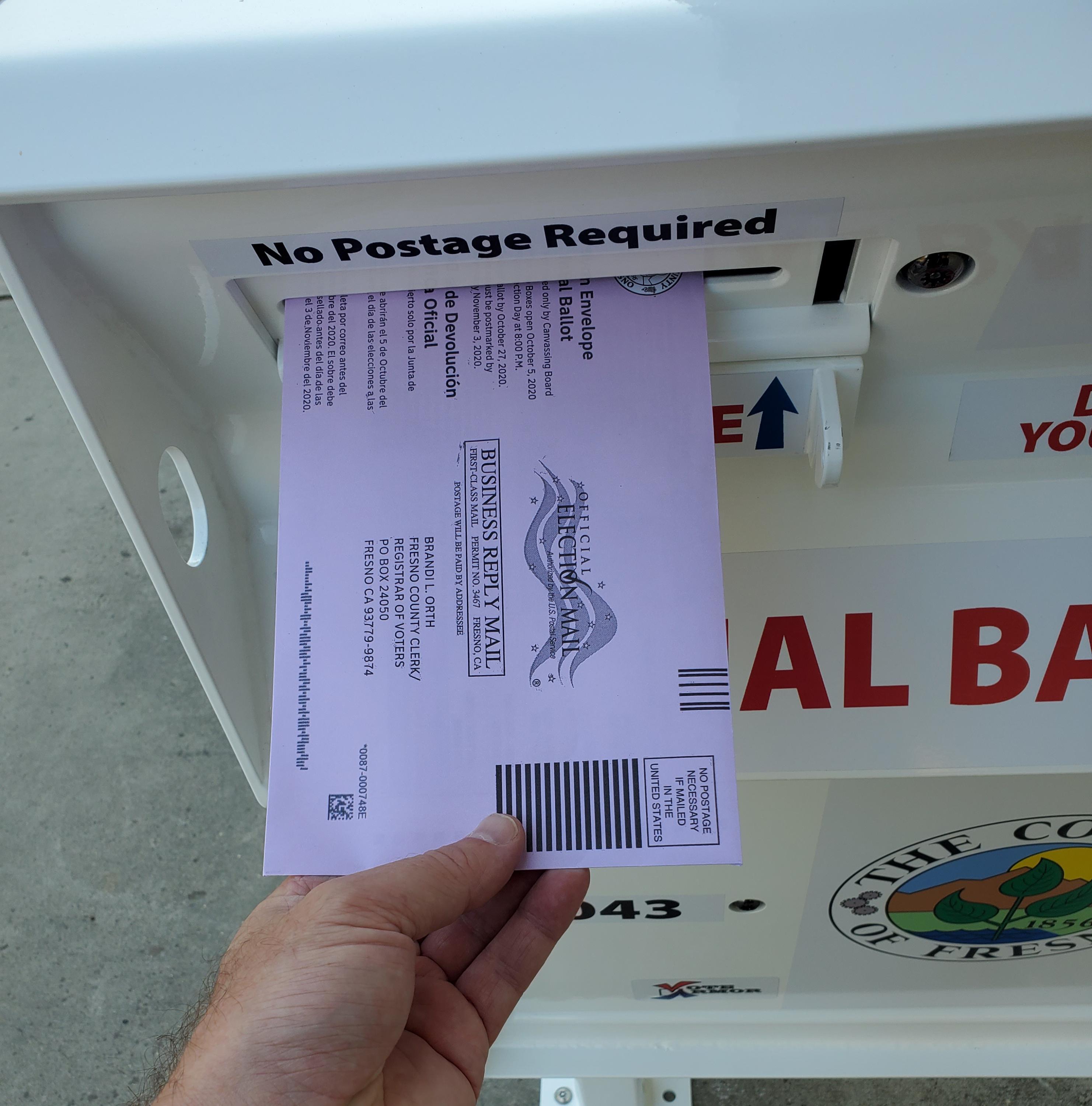
We’ve seen business and employee activism during this year’s U.S. elections at a level unmatched in history. True, we saw rumblings during the 2018 midterm election cycle, and that year witnessed an intensity of activism previously unseen. This year, we’ve seen far more companies push for voting rights and pull out the stops to get out the vote. And various business groups, which have pledged to be nonpartisan, have certainly played a huge role in the weeks leading up to the Nov. 3 election.
[Editor's note: Be sure to sign up for the weekly Brands Taking Stands newsletter, which arrives in your inbox every Wednesday.]
Some critics, however, insist unprecedented times require unprecedented action — and argue business leaders, for the most part, aren’t meeting the moment.
One of them is Bennett Freeman, a consultant for multinational corporations on international labor and human rights. Writing for Fortune, Freeman agreed that recent statements and moves are unprecedented, but he insists business leaders aren’t moving the needle far enough. Their actions, he says, are sorely lacking for two reasons.
First, such statements haven’t gone far enough to call for a peaceful transfer of power, assuming the election ends up with results closer than current polls indicate. Noting that the current U.S. president, vice president and Supreme Court justice nominee have declined to commit or support such a transition, Freeman wrote: “The turmoil that would befall the country, let alone the economy and the financial markets, in such a situation would be a nightmare that should concentrate the minds of business leaders regardless of party or ideology.”
Second, while we’ve seen the usual suspects — or brands that already have a record of political activism — come out strongly to ensure anyone who is eligible to vote in the upcoming election can do so, America’s largest companies have been relatively silent. True, some large companies like Gap Inc.’s Old Navy, as well as Starbucks, have taken measures unthinkable four years ago, but CEOs of companies within the Fortune 500 ranks for the most part have been silent. Freeman is unimpressed:
“The most prominent business leaders should lend their names and weight to this declaration — and better yet, extend its scope to address the imperative of the peaceful transfer of power, if the outcome produces a change in administration, as well as the integrity of the election itself.”
Freeman specifically called out the Business Roundtable, noting the group has been vocal in redefining corporate purpose. “Its purpose must now extend to the defense of American democracy itself,” he insisted.
Corporate America has long professed to be apolitical, even as companies' lobbying budgets and political contributions have stated otherwise. But Freeman suggests this playbook no longer applies. “Speaking out to avoid a fatal crash for American democracy is their responsibility too,” he added. “Meeting this responsibility would be an act of no-nonsense nonpartisanship.”
While we’re on the topic of the U.S. elections, we’ll spend much of the final episode of the 3BL Virtual Forum, this Thursday, Oct. 22 at Noon ET/9 a.m. PT, on how companies are doing their part to ensure everyone who’s eligible to vote in the upcoming U.S. elections can cast their ballots. Register if you haven’t already — we are presenting this event at no cost.
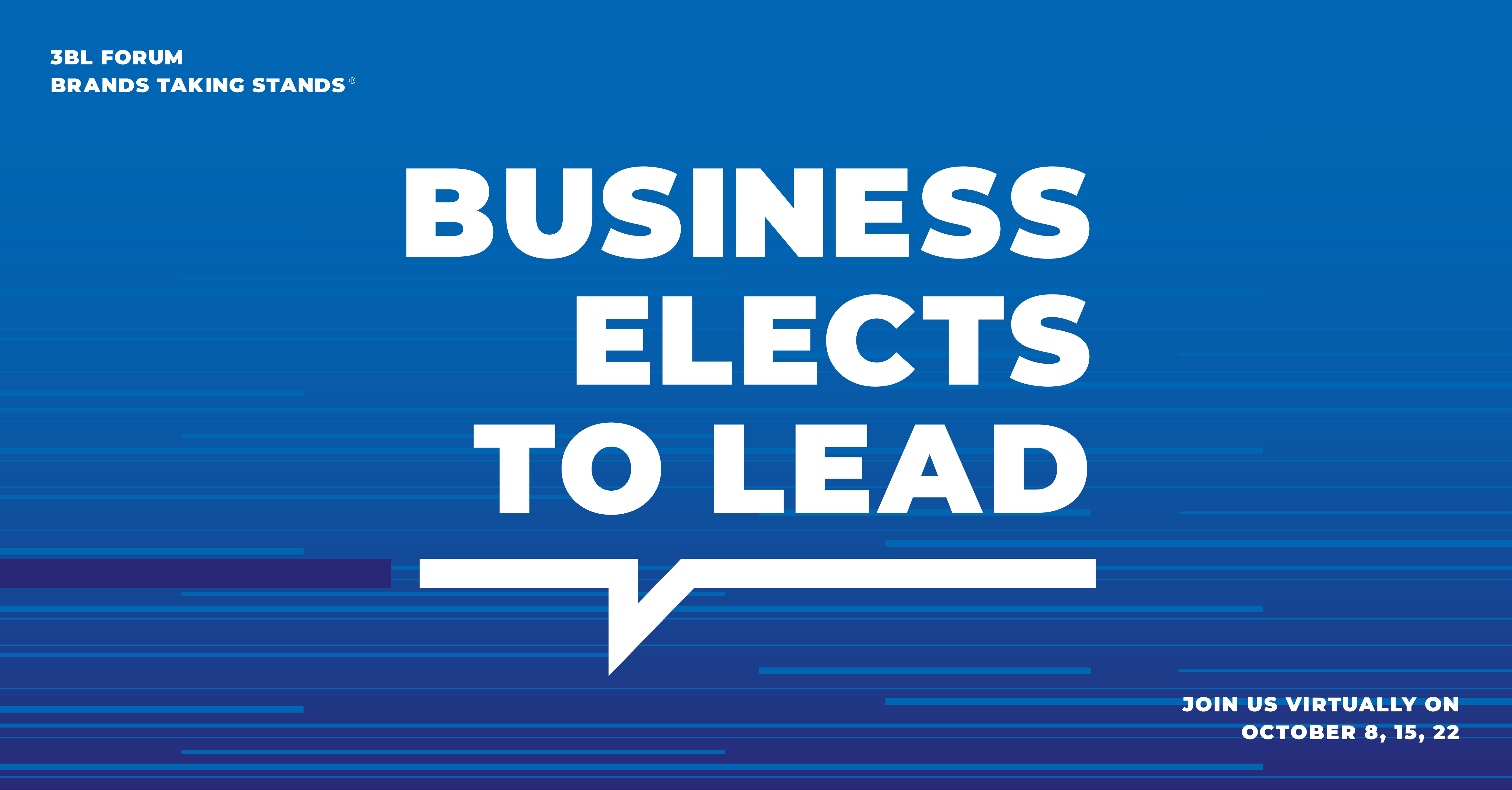
Image credit: Leon Kaye
10 Things to Know About Businesses’ Role in Addressing Social Justice
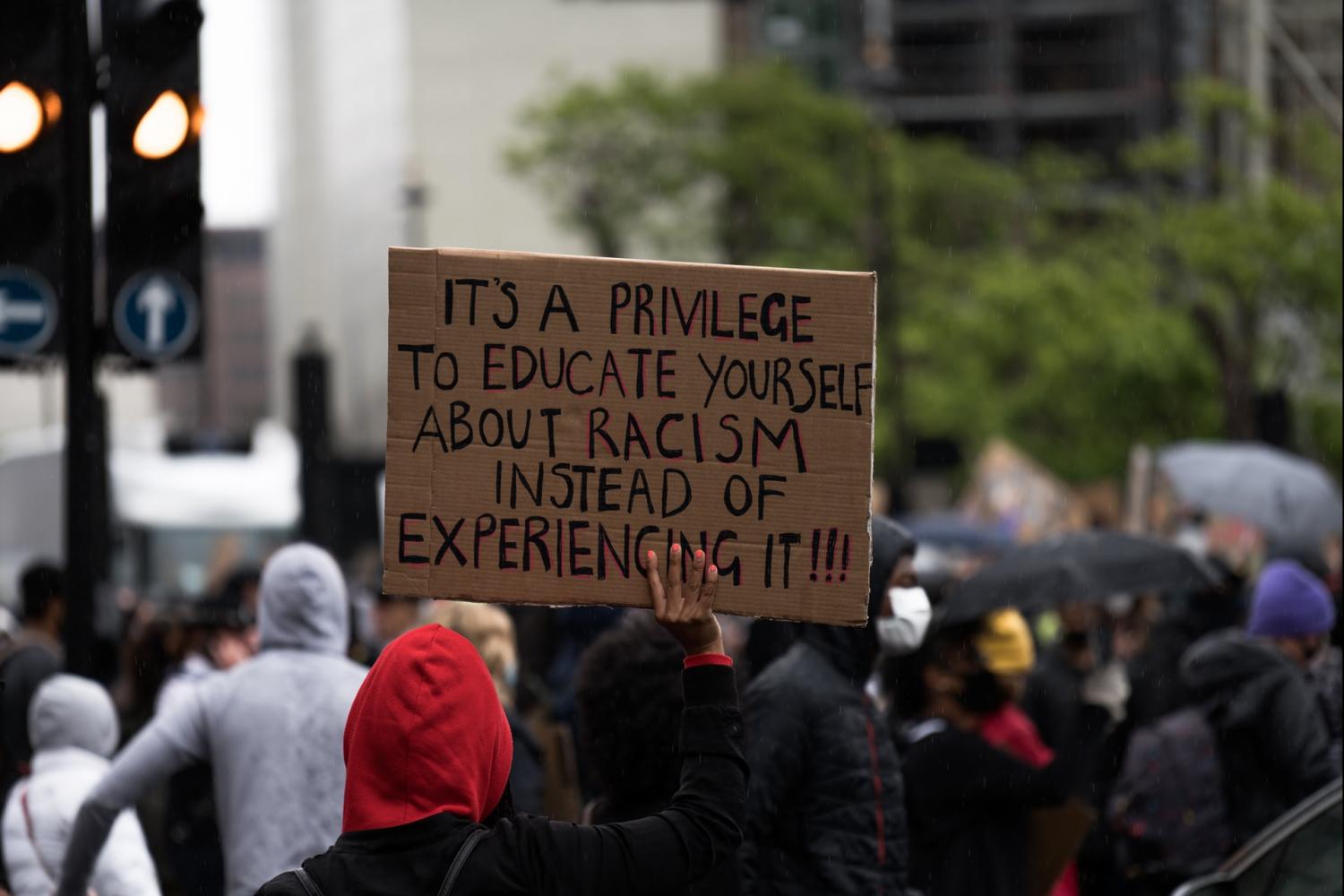
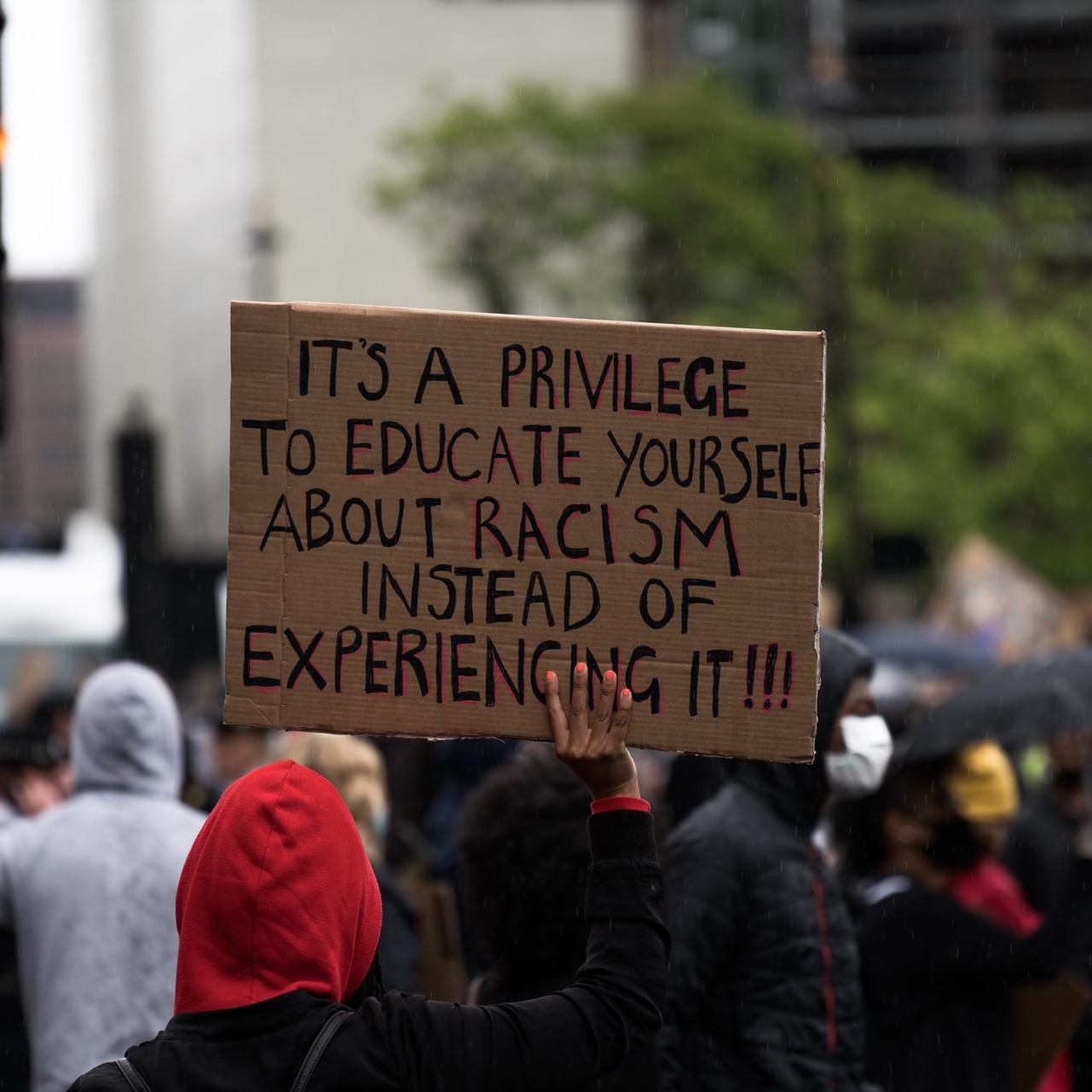
With Episode 2 of this year’s 3BL Virtual Forum in the rearview mirror, we thought we’d let the words of last week’s speakers shine on their own. Last Thursday was devoted to how companies are responding to the call for racial and social justice in America — and yes, it got personal, and in a very inspiring way.
While we’re on the topic of social justice, we’ll spend much of the final episode of the Virtual Forum, Thursday October 22 at Noon ET, on how companies are doing their part to ensure everyone who’s eligible to vote in the upcoming U.S. elections can cast their ballots. Register if you haven’t already — we are putting on this event at no cost.
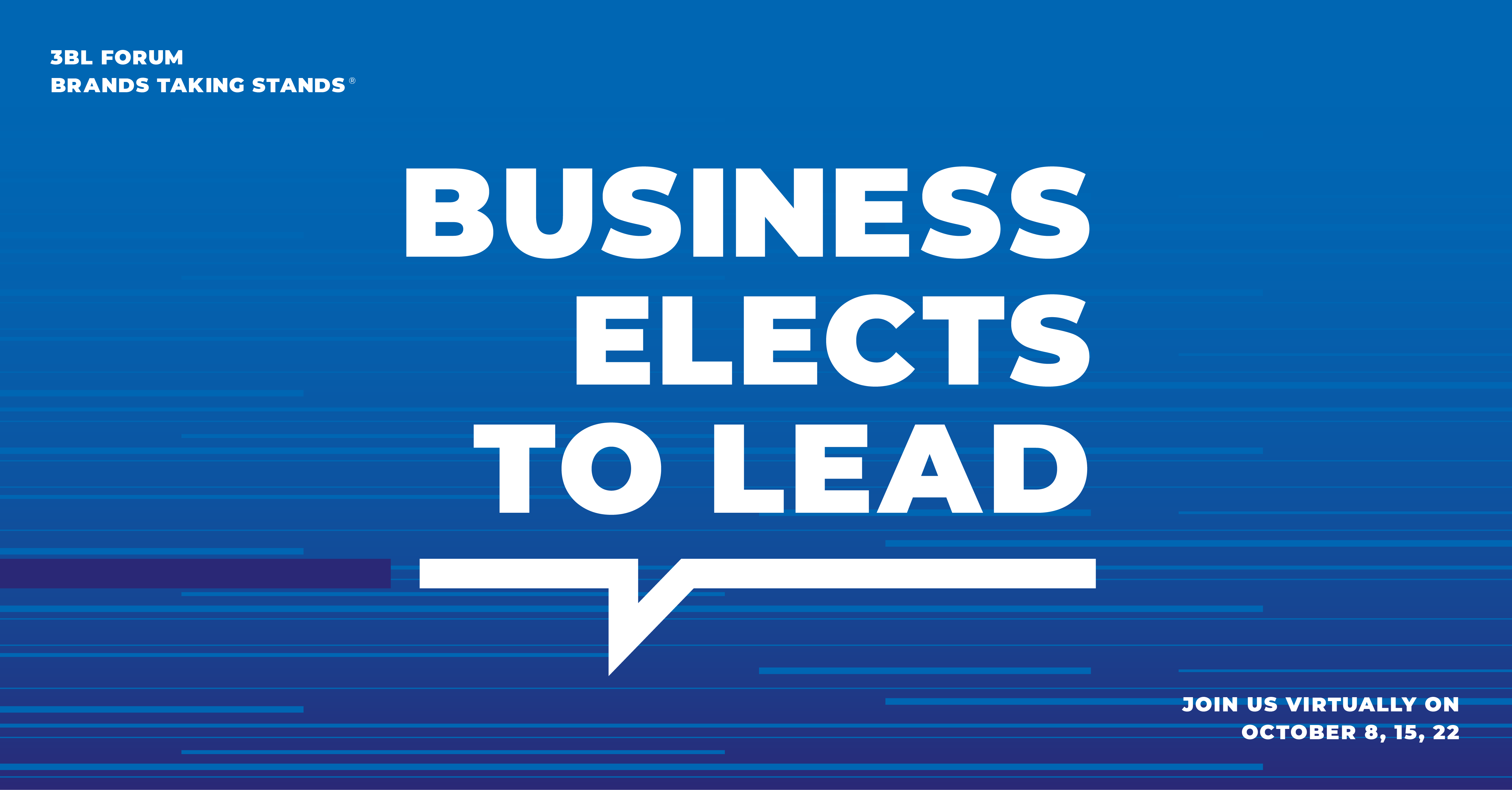
It takes more than a public statement to take a stand on social justice
“Words matter. Money and financial commitments matter. But they’re just a starting point for the hard work that needs to be done on the movement for racial and economic justice.” — Lynne Filderman, Executive Producer of the 3BL Forum and CEO of Curation on Purpose.
On being a Black American and having the personal intersect with the professional
“To a person of color, issues of race, racist ideas and racism are not remarkable. What, in fact, I believe is remarkable in this season is the way that people are engaging in a different way. For me, when I think about my lived experience, I have the experience of coming from relatively humble beginnings, what people may classify as a low socioeconomic status, but I today get to sit in the halls of leadership and power in corporate America, and so I like to say I live in many communities.” — Shundrawn A. Thomas, President of Northern Trust Asset Management
Clean energy, the climate crisis and underserved communities
“While we are really excited to see leadership [on the climate crisis], we also want to make sure those communities that don’t have the resources to invest in the next wave of clean energy are still able to access them. That’s what we’re up against — really trying to make sure under-resourced households, low-income households and renters are able to access those same things just as wealthier households or corporations and companies are able to.
This isn’t just something like systems and structures that we’re working within. It’s even just barriers within your day-to-day life. Renter households, for example, are not able to make those decisions about energy investments because they don’t own their home, and that is a systemic issue. That is a racial issue.” — Ben Passer, Director of Energy Access and Equity at Fresh Energy
Understanding the meaning of ‘white privilege’ in the business context
“Privilege is such a polarizing word — I never knew that or realized that. I think when most whites hear ‘privilege,’ they think of money, but this is not about money. You have the privilege of leadership, you have the privilege of making policy, and that’s across any color line or culture line.
“You have the power to make change, but also you have the power and the privilege to take a pause and then really make impactful, sustainable change. Everyone came through the gate ready to run and saying: ‘What do we do? George Floyd was murdered. We have to do something.’ And I’m like, ‘Slow down, take a pause — what makes sense for your company, your company culture, your growth?’ [White people] have the power to make the change, you have the privilege to take that moment to pause and figure out what’s the best thing to do.” — Leslie Short, Founder and CEO of The Cavu Group
Opportunities companies have to push forward on social justice
“Corporate America is kind of the last thing that we’ve unleashed to dismantle racism. We’ve seen efforts in government, and we’ve left it up to government. But corporations are extremely powerful, and the private sector is extremely powerful. When you unleash these forces, that’s truly going to get us to the place we want to be, and that’s a place where we have diversity, equity and inclusion in every single thing we see and do.” — Orson Aguilar, Principal of Policy and Advocacy for UnidosUS
What it means to move from the sidelines to being in the center of the action
“I don’t want to minimize the serious issues that our society must wrestle with, but I don’t believe we’re actually as polarized as some would like us to believe. I believe there is a broad consensus around our country that people ought to have access to health care, that people ought to have the ability to go and vote, that climate change is a thing we need to deal with.
“I think we’ve been led to believe by those who want polarization to serve their narrow political agenda that there’s this huge divide, but I don’t think that exists. I’m hopeful that we will find a way to move forward together and that it will create a sense of stability within our country that will allow us to address some of these critical issues.” — Chris Miller, Head of Global Activism Strategy at Ben & Jerry's
Yes, there’s a pipeline of talent. To say otherwise is disingenuous.
“I’ve worked in so many sectors over the years, and I started in about the mid-1970s. One of the things I heard then that I still hear now is, ‘Well, you know, if there were simply more [people of color] in the pipeline, people would be in positions within organizations, and they would be at the table.’ That was back in 1974 — it’s impossible that by 2020, and into 2021, the pipeline hasn’t been filled. It’s discouraging, it’s exhausting in some respects, but at the same time, I will say that I’m forever hopeful.” — Jennifer Smith Turner, Novelist, Board Member of Newman’s Own Foundation and Board Member of Chief Executives of Corporate Purpose (CECP)
What this summer has meant for many of our fellow citizens
“For me, it’s been exhausting, it’s been disheartening. But what I try to do is double down in the ways I can uniquely move the ball forward, even figuring out ways to use the comparative power and privilege — even as a Black man but a man nonetheless, and coming from a particular educational background — that I have to really move our company forward for folks who don’t necessarily enjoy some of the [privileges] I enjoy.
“Community is important right now, and if companies can try to build and create community as brands, that’s a critical part of taking a stand as well because these issues chase us into the workplace. When I work here, I don’t stop being a Black man and seeing what happened to George Floyd and Ahmaud Arbery and Breonna Taylor. So, the workplace has to find a way to say, ‘You know what, in this part of the world, we’re making something different for all the folks that work here.’ I think people in roles like mine can be a critical player and try to create that.” — Chequan Lewis, Chief Equity Officer, Pizza Hut
On equity and how work can further the movement for racial and social justice
“Think about equity on two different levels: You can think about equity as ownership interest, but you can also think of equity as equal access to opportunity. I like to say my work gives me two opportunities to drive this all-important focus on equity. When you’re in a leadership position and when you’re working with others and have influence with others, we can actually create more equitable opportunities. And the wonderful thing about the country we live in is that opportunities abound, but a tough reality is access to that opportunity is not equitable. So, I have the opportunity, day by day, to create more opportunities.” — Shundrawn A. Thomas of Northern Trust
Bottom line: We must be able to talk this out
“When we are in the workplace, we don’t leave our diversity, we don’t leave those experiences that define who we are at home. It’s so important that we’re able to have those dialogues at work and be part of that inclusive culture — and taking the best parts of ourselves.” — Cecily Joseph, Chair of the Board of Directors at Net Impact and Advisor of the Initiative for Equity and Social Justice at Presidio Graduate School
Image credit: James Eades/Unsplash
WWF Recommends ‘Planet-Based’ Diet for Health and Environmental Sustainability


WWF reminds us that our current food choices often neglect one important effect of the global food system: environmental sustainability. Current food production methods and their impact on natural resources inadvertently affect our wellbeing and the planet at large. To maintain good health and meet climate change targets, we cannot compromise nutritional benefits or environmental costs. A new report suggests we are doing the latter.
For WWF, taking on climate change globally means a renewed local focus on food
Earlier this month, WWF released a report that reveals the necessary health and environmental benefits of adopting what it calls a "planet-based diet." This means choosing foods that are produced with respect to local capacity, can meet nutritional needs and are in alignment with environmental sustainability goals.
From WWF's perspective, many current government dietary guidelines do not align with global health and environmental goals. Agricultural food processes are costing the planet freshwater and accelerating tropical deforestation and biodiversity loss. Food produced in this detrimental fashion is often over- or under-consumed.
Take, for example, the U.S. According to WWF, Americans are over-consuming meats, sugar, saturated fats and sodium and under-consuming vegetables, fruits, dairy and fish. These trends account for growing rates of chronic diseases and deficiencies.
This isn’t only about taking on climate change or simply consuming more plant-based foods. A planet-based diet is not merely a consumer choice. Each country is facing unique challenges from its own food system.
WWF illustrates this point by explaining that encouraging 'flexitarian' or vegan diets in India or Indonesia would accelerate biodiversity loss, as the nutritional need for fruits and vegetables and the resulting global demand would dramatically increase. To combat this, farmers, retailers, governments, and consumers must all participate in creating and supporting sustainable food production that is specific to each country.
There are numerous benefits to adopting a planet-based diet. For us, this means a reduced rate of premature mortality and chronic diseases. For the planet, it means the preservation of freshwater and the prevention of tropical deforestation and biodiversity loss.
How dietary shifts can help
WWF highlights five strategic actions that would benefit from a planet-based diet: reversing biodiversity loss, staying within the global carbon budget for food, utilizing existing cropland, achieving negative emissions, and optimizing crop yields.
Much of global biodiversity loss stems from not using healthy plant species that are adaptable to food production and climate change and instead opting for animals. According to ongoing WWF research, agriculture is the cause of the extinction of 80 percent of mammals and bird species globally. And biodiversity loss isn’t limited to the impacts of livestock. For example, in Denmark, biodiversity loss is largely driven by coffee, tea and cocoa.
As it is important to balance every country’s nutritional needs and agricultural capacity, living within the global carbon budget for food requires the same approach. This means equally distributing this budget to all countries, so all parties have the same responsibility of combating climate change and tackling their local food issues. Another action supported by dietary shifts is halting the expansion of croplands and instead growing food and improving its production to support people instead of livestock.
Taking such action will require us to be innovative in food production processes. WWF says it supports methods of conservation agriculture, agroforestry and regenerative agriculture because it will produce more food with fewer resources. In comparison to animal foods, plant-based food products require fewer natural resources. In fact, WWF points out that the majority of water use is attributed to meat and dairy livestock consumption, and consuming plant-based foods can reduce water use by 8 percent in the U.S.
How WWF suggests becoming “planet-based”
How can we implement the planet-based diet when so many sectors are involved? It may seem daunting to implement changes quickly when almost every country has different regulations, agricultural capacity and nutritional needs. For action steps, WWF emphasizes collaboration, creating ambitious government dietary guidelines, adopting new regenerative agriculture practices and minimizing the use of pollutants. In addition, cover crops and improved grazing techniques will protect natural resources. WWF also stresses policies and aligning legislation that together protect biodiversity and improve food production.
Essentially, a planet-based diet emphasizes local needs, food accessibility and nutrition, while tackling problems like tropical deforestation and biodiversity loss. We cannot balance one or the other. With agriculture accounting for 27 percent of global greenhouse gas emissions, according to WWF’s research, we must not ignore the impact of our food choices.
On that point, WWF released an online tool for people to do just this. The Planet-Based Diets Impact and Action Calculator sheds light on every individual’s impact and areas for improvement. Along with this, countries can come up with their own solutions that align with a planet-based diet. We will be unique in how we implement this diet, but will face the same consequences if we don’t.
Image credit: Markus Spiske/Unsplash